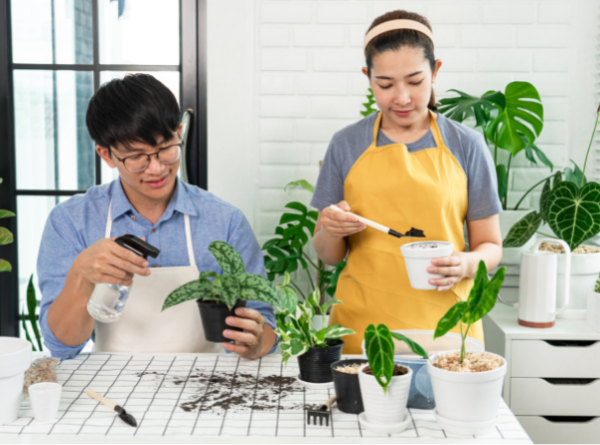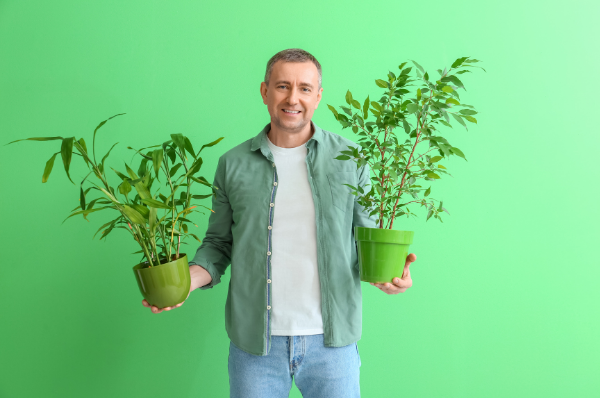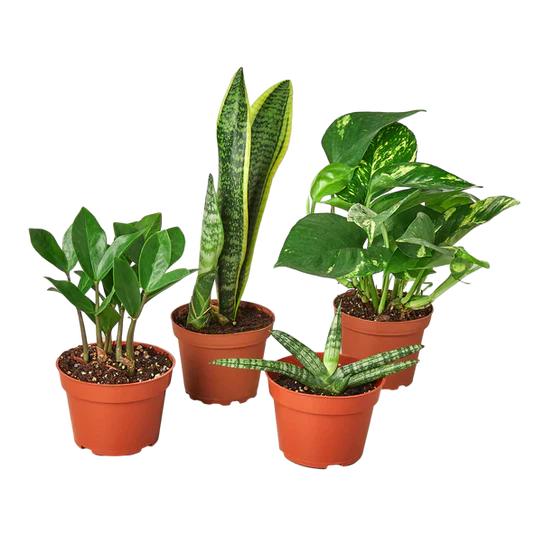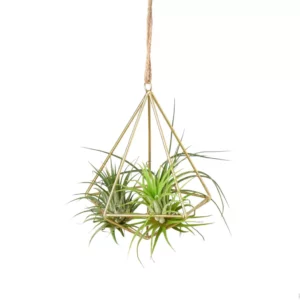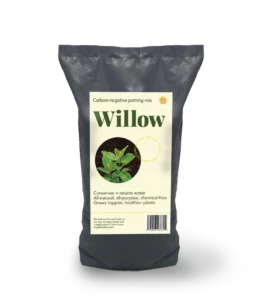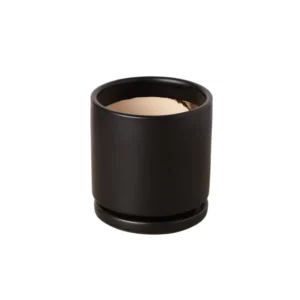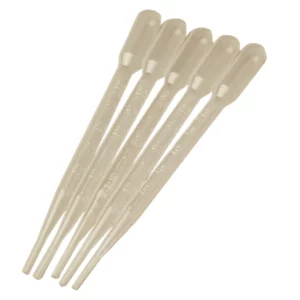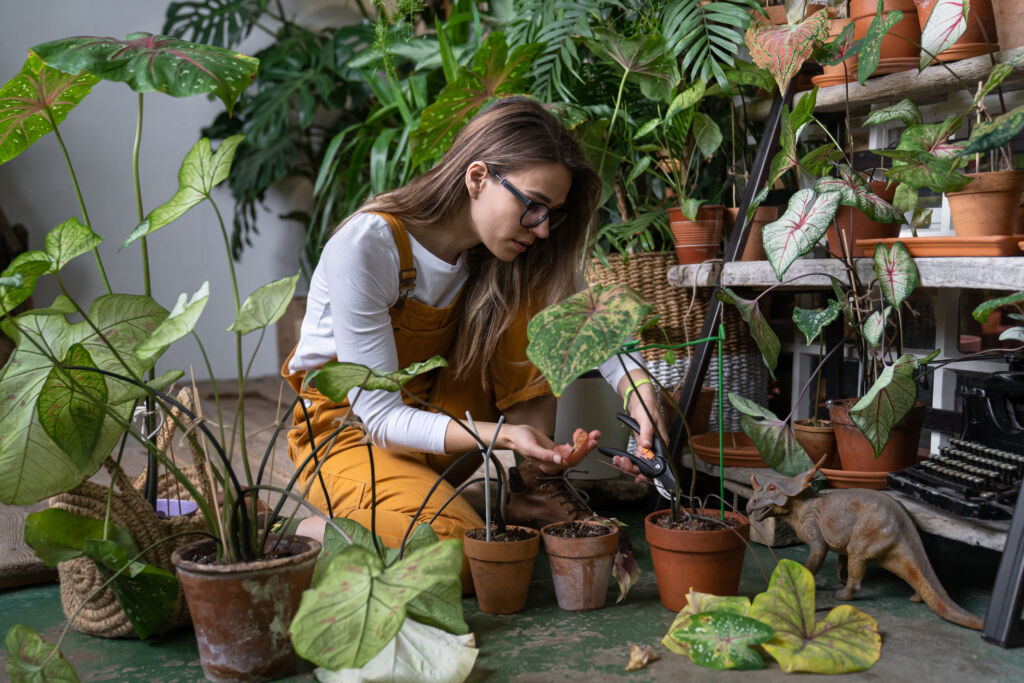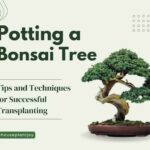HousePlantJoy is supported by our audience. When you purchase through one of our links, we may earn a small affiliate commission. As an Amazon Associate I earn from qualifying purchases. Your cost is not affected.
==================
Learn to Be a Successful Plant Mom or Dad! – The Innovative Way of Growing Houseplants
We love to have plant babies, but the question is, “How to be a successful houseplant mom or dad?” Well, we need to learn their qualities and growth requirements so that we know how to take care of them. Being a responsible plant mom or dad keeps our houseplants growing, thus giving us joy. When they thrive into big and lush mature houseplants, they give back to us by providing health benefits and a source of happiness. So becoming a successful houseplant mom or dad takes time, skills, and knowledge.
Tips on how to be a successful houseplant mom or dad
Several factors play a crucial role in growing and taking care of houseplants. Realistically, most of us do it by trial and error. As a result, some of our poor babies are dying or have met their untimely demise. Of course, we don’t want that to happen. But sometimes, we cannot prevent the death of one or two. We need to enhance our skills and knowledge to keep our houseplants flourishing. Growing houseplants is both science and art, and let us be ready to embrace both. Now, let’s start our journey of becoming a successful houseplant mom or dad.
1. Types of Houseplants
There are a lot of ornamental and flowering plants we can bring indoors. The Joyful Eco offers five houseplants categories: air plants, pet-friendly plants, easy-care plants, succulents and cacti, and tropical indoor plants. Rest assured, all these plants are well-rooted and healthy. So, choose what you prefer and start an eco-lifestyle now. Then, evolve into a successful houseplant mom or dad while we are supporting you in your journey with weekly information and new ideas.
2. Potting Soil Mix
Air plants don’t require soil to grow. We put them in a unique display hanger where they can absorb nutrients and moisture from the air. Further, they give us an array of colors when they bloom; they are small yet beautiful. They are unique to grow because they don’t require much aside from water, nutrients, and light.
A successful houseplant mom or dad knows the best potting medium to use. A well-draining potting soil mix is best for our houseplants. It allows just enough time for a houseplant to absorb what it needs between waterings. It does not dry out too quickly or slowly, so the roots won’t rot from too much moisture. When the excess water is out then, air comes in to aid their metabolism.
Houseplants are prone to root rot because of the high humidity and indirect sunlight inside our homes. So, we need to choose a well-draining potting soil mix for them. Also, it’s beneficial for our houseplants to have a new soil mix every 12 to 18 months. Yet, cacti can stay in the same pot for years, only replenishing the potting soil because they are slow growers.
3. Pot size
The advice of “choosing the right size” also applies when we buy the pots. When our houseplants are small, then get a small plant pot. It goes with medium, large, and giant houseplants too. For cascading or trailing houseplants, we go fancy with this with our disco ball hanging planter.
Why does houseplant pot size matter? Plants first develop their root system. Once the roots become established, the stem and leaves start to grow. When we put a baby houseplant in a big pot, we cannot get an optimum top growth because it will concentrate on spreading its roots to the whole area. Simply put, we have a plant with overdeveloped roots but underdeveloped leaves.
On the other hand, when the houseplant grows and matures, we need to change the pot to prevent it from being root-bound, resulting in slow or stunted growth. So remember baby plant, small pot; mature houseplant, larger one. We have a 3 – 4 inch cylinder pot perfect for small houseplants. It has a drip tray attached to its bottom, so we won’t have to worry about the mess when watering.
4. Water
Watering is better when we monitor our houseplants individually. Each one has a different water requirement every 1 to 3 weeks. The watering frequency depends on the indoor temperature, humidity, type of plants, location, and growth rate. A water meter is helpful though we recommend doing a soil test. Just put a finger about 2 inches into the soil. If it’s dry, then it’s time to water. But if it’s still moist, then there’s no need to do so.
For convenience, we have a watering can for indoor plant care. It’s convenient and easy to carry. We can grab it anytime and water our houseplants as needed. We recommend using this to water the roots, but for the leaves, use a sprayer, and it’s called misting. Plant leaves need water too!
5. Location
Where we put our babies indoors affects their growth rate and appearance. Plants require lighting to grow, so we need to provide it either indirect or artificial. The best location is where they get bright indirect light away from the draft. When bright indirect light is unavailable, especially in the winter, we have the LED Flexible Grow Light for convenience.
House plants that require bright indirect light can thrive well in the west-facing area because they use bright light for photosynthesis to reach optimal growth. However, houseplants that include lucky bamboo, silver satin, aloe vera, or aglaonema don’t need bright light. We can assign them to the southwest or south side of the house.
We must also consider the humidity when choosing a location to grow our houseplants. During the summer months, when the air is dry and hot, we need to maintain the humidity requirements of our houseplants by using the 300 ml Plastix USB Humidifier.
6. Fertilizer
We can choose from organic or inorganic when it comes to houseplant fertilizer. We recommend the fortified with minerals Tres 20 Sauce organic fertilizer. It’s a safe and gentle 20-20-20 blend for nourishing our houseplants. Mix one teaspoon of Tres 20 Sauce in 1 liter of water and feed it to houseplants every two weeks. The benefits include optimal growth, healthy roots, and foliage. It also prevents the formation of brown spots and the yellowing of leaves. We have fertilizer eye droppers you can use to measure accurately the amount added into the water.
7. Rotation
Houseplants lean to the source of light, a part of their growing process because they use it to manufacture their food. The side exposed more to light grows taller, and the leaves turn bigger. So, there is a bending effect with unbalanced growth. A simple rotation can solve this problem.
When we rotate our houseplants, we help them become more healthy, beautiful, and stable with balanced growth. The distribution of leaves is even, and the stems grow straight upwards. The best way to do the rotation is by turning them a little bit clockwise during the watering time. If we move our house plants periodically, we expose them to the light on all sides.
8. Pruning
As our houseplants flourish, they need trimming in leaves and stems to keep them attractive and retain healthy parts. This pruning practice removes dying leaves and flowers, damaged or diseased stems, or misaligned stems and branches. When old leaves are cut-off, we help our houseplants focus on nourishing new or unfurling leaves.
You may use pruning shears to do the job. It must be sharp, so it leaves a clean cut. We recommend using sharp and sanitized gardening shears. When the blade is dull, it may damage the stems and stalks. And remember to sanitize first to prevent cross-contamination and transfer of diseases.
9. Propagation
The most inexpensive and practical way of multiplying our babies is the cutting method. Most mature houseplants produce shoots, so we only have to cut the roots to separate them from the mother plant. Then put it in a small pot with the required potting soil mix. Here are the steps to follow when propagating our houseplants.
- Remove the mother plant from the pot and examine the roots where the shoots connect their mama.
- Cut the roots neatly using a sharp and sanitized knife, scissors, or shears. Be careful not to break the root system.
- You may wash the roots and spray them with fungicide before transferring them to a pot.
- Water until it drains to the bottom of the pot.
- Put the new plants in the “nursery area” with indirect light and the required humidity.
Conclusion
We have these nine practical tips for growing and caring for our houseplants. They are not complicated, and we can follow them quite easily. So, armed with this knowledge, we can be confident to embark on becoming a successful houseplant mom or dad. And we are right beside you to give our undying support. Happy planting!
Read More:

